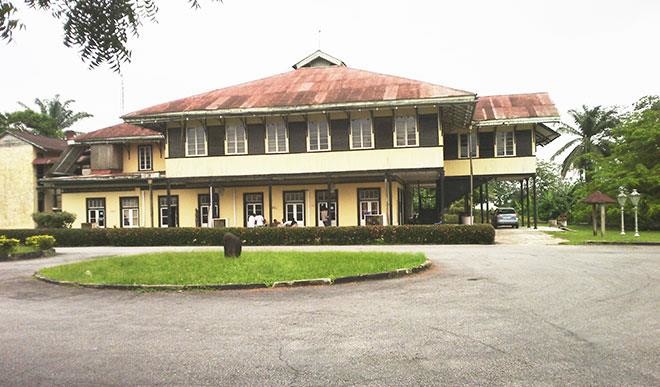History lives at Old Residency, Nigeria’s first ‘Aso Rock’
Would you believe that the structures that housed the offices of Lord Lugard and other early administrators and colonial officials of Nigeria are still intact? In Calabar, capital of Cross River State, you can still see the massive offices that served as Nigeria’s first ‘Aso Rock’, where both the Northern and Southern Protectorates of Nigeria […]


Would you believe that the structures that housed the offices of Lord Lugard and other early administrators and colonial officials of Nigeria are still intact? In Calabar, capital of Cross River State, you can still see the massive offices that served as Nigeria’s first ‘Aso Rock’, where both the Northern and Southern Protectorates of Nigeria were administered from before it was amalgamated by the same Lord Lugard in 1914.
Materials used in erecting the structure, were all brought in from Britain, with the experts to build it. The one-storey edifice was built in 1884 in Old Calabar. Now called Old Residency, it was originally known as the Government House, and it accommodated the early British administrators of the Niger coast territories.
The Old Residency is situated between the residence of today’s chief judge of Cross River State, that of the deputy governor, and with presidential lodges in front. The building, in 1950, also served as ministerial guest house. After the Nigerian Civil War, the Old Residency accommodated offices of the then new South Eastern State of Nigeria.
The building was declared a national monument in 1959 and has been renovated over time by the National Commission for Museums and Monuments in 1986.
Credit is given to Dr. Ekpo O. Eyo, the first Nigerian who became director of antiquities of the commission and later director general in 1968 till 1986 by which time the place was open to the public. He it was that influenced the retention and upgrade of the Old Residency to present national status. The pioneer surveyor of antiquities at the commission, a Briton, was Mr Kenneth C. Murray from 1943 to 1968.
Curator of the museum, Mrs Anna Effiom said the first man that occupied it was one Consul Hewett, who now has a street named after him in Calabar. She said the Old Residency is now used as a national museum, adding that after Hewett many other colonial administrators and key government functionaries had offices and lived there with their families.
Principal education officer at the Old Residency, Mrs Emilia Coco-Bassey who took this reporter around the sprawling edifice, said there are countless national artefacts kept in the Old Residency, as staff make extra efforts to move about to collect historic artefacts in the state.
One of such is a 20th century Velocette motorcycle used by one Mr Colin MacDonald, a European, who was a teacher at the famous over 100-year-old Hope Waddel Training Institute Calabar, according to Coco-Bassey. It is a massive machine which still looks stronger and could compete with today’s motorcycles. In those days, motorcycles were a prestigious means of transportation, especially by the elite, or missionaries and colonial lords.
There is also another steam engine iron boat kept at a safe point in the back of the Old Residency. It is now painted black and the iron is still very strong. The boat was used by then United African Company (UAC) to convey palm oil in what used to be called ‘Congo Drums’ to Britain and other European nations for their industries. Two of the Congo drums, too, constructed in massive irons are kept beside the long steel boat.
Coco-Bassey said that apart from housing historical artefacts, they usually open it to the public every day, to visit and learn about Nigeria’s history.
But how is it been put to more beneficial use today? Coco-Bassey said “We do organise art exhibitions regularly where visitors come in and learn. Of course, the Old Residency is a tourist site. We do also organise public seminar and other groups come here often to also put up such educational workshops. We encourage schools to visit us to enable the young ones know about this history.”
